On 26 September 2022 at 19:14 EDT (23:14 UTC), NASA's DART (Double Asteroid Redirection Test) spacecraft will smash into the small moon of asteroid 65803 Didymos.
Telescopes on Earth will measure the resulting change in the moonlet’s orbit, while the European Space Agency’s (ESA’s) Hera mission will study the damaged target up close in 2026.
Why is NASA doing this? Well, over its 4.5 billion year lifetime, Earth has been battered and pummelled by cosmic collisions.

Some 50,000 years ago, a small asteroid slammed into northern Arizona, USA, leaving a 1,200m-wide impact crater and turning the area into a wasteland.
A similar impact today would have catastrophic consequences – unless we could find a way to divert the space rock.
NASA will test the technology to do just that, by firing a half-tonne spacecraft into a small asteroid in an attempt to deflect its path.
Asteroids and their risk to Earth
Ever since the discovery of 433 Eros in 1898 – the first asteroid known to cross the orbit of Mars – astronomers have realised that Earth is at risk from cosmic impacts.
Today, they know of over 2,200 ‘potentially hazardous asteroids’ (PHAs): objects larger than 140m in diameter that can approach our planet to within 7.5 million kilometres.
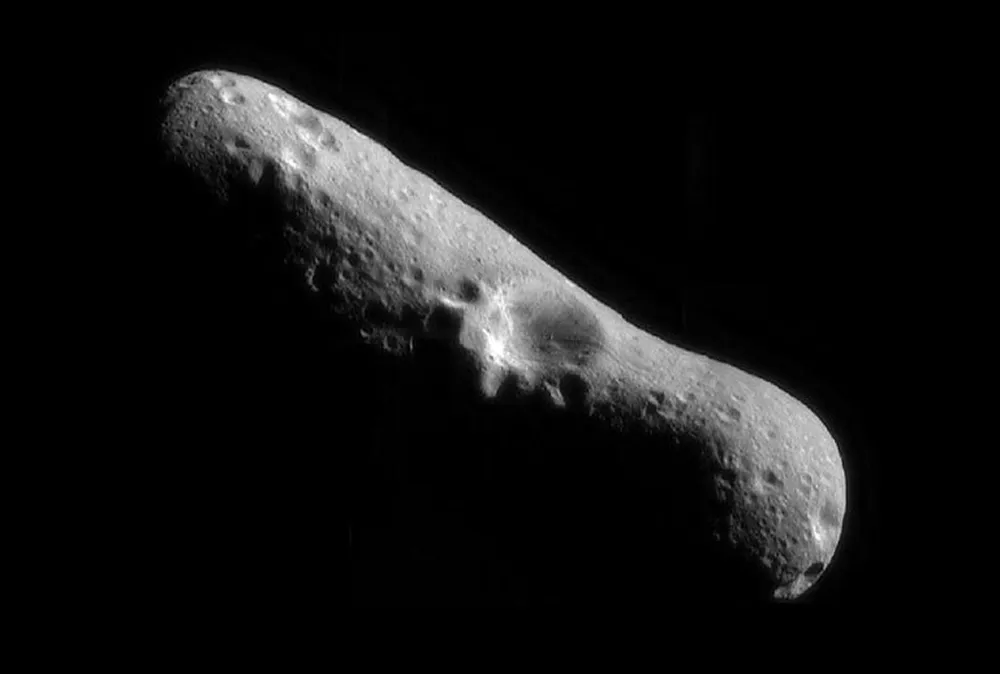
Smaller ones are even more numerous. Tiny space rocks, just 10m or 20m wide, are regularly seen passing within the Moon’s orbit, or exploding in the atmosphere, like the Chelyabinsk impactor in February 2013.
While the Chelyabinsk blast did not claim any lives, a 100m-wide asteroid could destroy a large city.
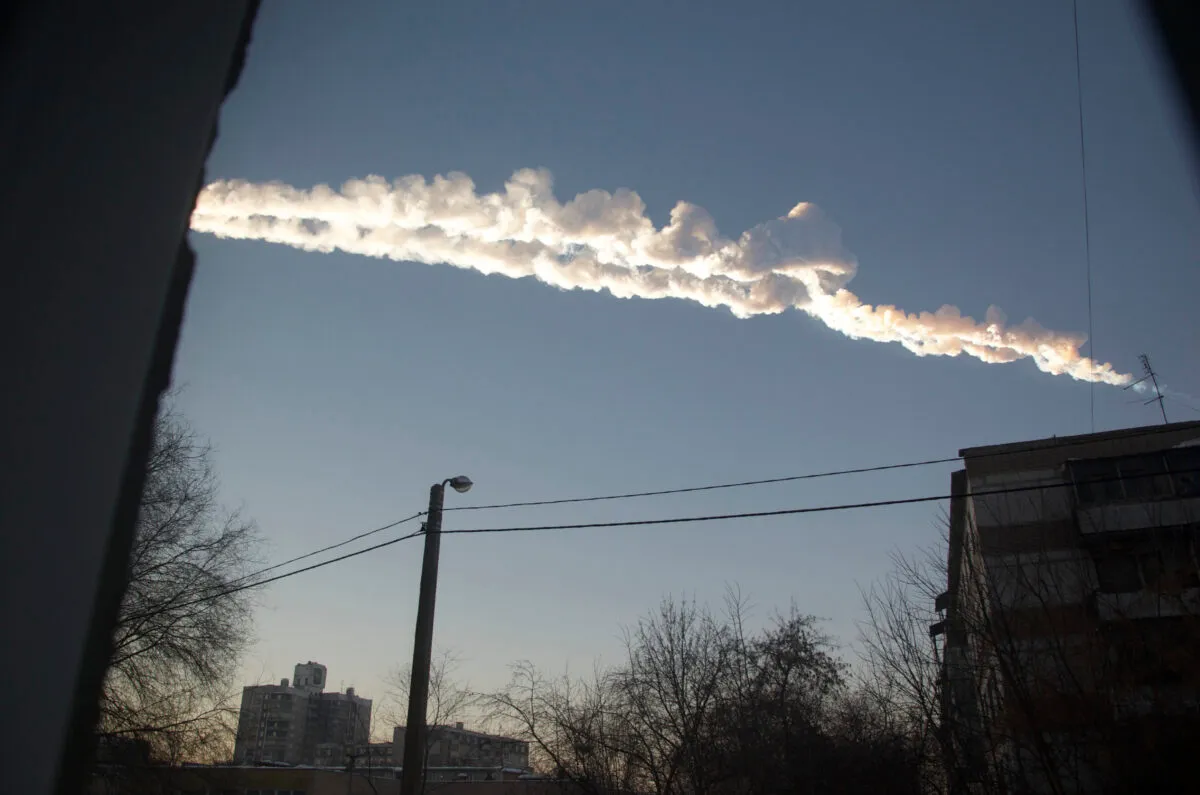
Objects that size collide with Earth once every 5,000 years or so, on average.
Increasing the diameter to 400m brings the impact frequency down to once every 100,000 years, but the damage is proportionally larger and could wipe out an area the size of France.
"We need to find those objects before they find us," says Kelly Fast, director of NASA’s Planetary Defense Coordination Office.
Could we really deflect an asteroid heading for Earth?

Searching for and finding an asteroid is one thing, but doing something about it is another.
And while astronomers are constantly discovering new NEOs (near-Earth objects), there is no single existing programme for defusing an approaching cosmic missile.
Scientists don’t even know what the best strategy would be, although the ‘kinetic impactor’ technique – basically, kicking the oncoming rock out of the way – appears to be a relatively simple, effective and cheap solution.
Except that no one has ever tried it.
With DART, that’s going to change. The 360kg spacecraft, about the size of a golf cart, will deliberately crash itself into a small asteroid at a velocity of 6.6km/s.
DART is a very basic spacecraft, developed and built by the Johns Hopkins Applied Physics Laboratory, and fitted out with little more than an ion engine, a few small thrusters, five Sun sensors and a star tracker, simple radio antennas for communicating with Earth and a camera.
Power is provided by two roll-out solar arrays, each measuring 8.6m x 2.3m. And all of this will be intentionally destroyed when DART slams into its target.
DART mission's target

The DART mission's target is known as Dimorphos and it measures approximately 160m across.
It’s in orbit around asteroid Didymos (Greek for ‘twins’), which is almost five times larger, at 780m in diameter.
Didymos is a typical near-Earth asteroid, discovered in 1996 by the Spacewatch project at Kitt Peak National Observatory in Tucson, Arizona.
It rotates every 2.26 hours, and its elliptical orbit of the Sun takes it from the main asteroid belt to just outside Earth’s orbit and back every 2.11 years.

Astronomers discovered Dimorphos in 2003. This small moon of Didymos orbits the main asteroid every 11.9 hours at a distance of just 1.2km, moving at a leisurely pace of some 0.2m/s – comparable to the walking speed of a tortoise.
The destructive impact of the DART spacecraft will change this velocity by less than a millimetre per second (after all, hitting a 5 billion kilogram asteroid with a 500kg spacecraft is like throwing a peppercorn at the tortoise), but this should change the moon’s orbital period by about 10 minutes – enough to be measurable from Earth.
What will happen?
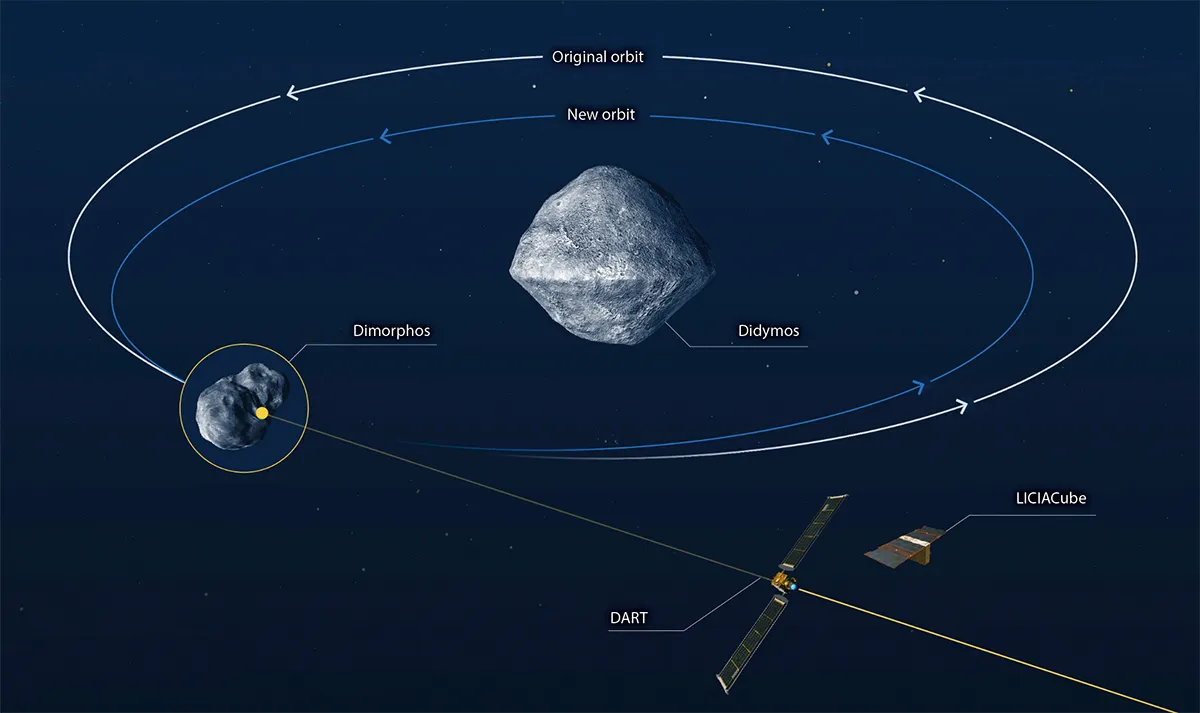
The truth is, however, that nobody really knows exactly what will happen.
"It all very much depends on the internal structure of the target," explains Fast.
A solid body will respond differently from a relatively loose ‘rubble pile’.
Didymos may indeed resemble the rubble-pile asteroids Bennu and Ryugu, which have recently been studied in detail by NASA’s OSIRIS-REx spacecraft and the Japanese Hayabusa 2, respectively, but Dimorphos probably has more internal strength. Only time will tell.
"It’s the very first time we’re doing this," says Patrick Michel of the Côte d’Azur Observatory in France, who is the principal investigator for ESA’s Hera mission.
"We simply have no idea about the result."
At the time of impact, Didymos will be some 11 million kilometres from Earth, so there won’t be anything to see from the ground.
How will DART film its own collision?

To witness the collision from up close, NASA selected the Italian firm Argotec in Turin to develop a small ‘CubeSat’ that was released by DART just prior to its arrival.
LICIACube, as the tiny satellite is called (Light Italian CubeSat for Imaging of Asteroids), is equipped with a camera that will relay pictures of the impact back to Earth.
Of course, LICIACube will have about the same relative velocity to Didymos and Dimorphos as DART has, around 6.6km/s, so it will shoot past and be unable to study the aftermath of the collision in detail.
That will be the task of the Hera mission, due to be launched in October 2024.
Hera is going to rendezvous with Didymos in 2026; its observations of the crater produced by DART will tell scientists a lot about the internal structure and composition of the small asteroid moon, says Michel.
To that end, the Hera mission will be fitted with optical and infrared cameras, a laser rangefinder and a hyperspectral imager.
In addition, Hera may also carry two small CubeSats, as well as a tiny lander and impactor built by JAXA, the Japanese space agency.
Could the DART mission save humanity?

Of course, the real question is: will the experience and information gained by DART and Hera enable us to successfully ward off a potentially catastrophic asteroid impact in the future?
That all depends on the particulars of such an event, says Amy Mainzer, a University of Arizona planetary researcher who is the project scientist for NEOWISE, NASA’s space-based asteroid hunter.
Suppose a near-Earth asteroid is detected tomorrow that is going to impact Earth in 2070.
That gives us enough warning time: a tiny change of velocity now will be enough to change its course, so that by the time it crosses Earth’s orbit in 50 years our planet will no longer be in its way.
"We don’t want to discover these objects a few days before they are going to hit us, but instead many years or decades in advance," says Mainzer.
Even then, a DART-like impact won’t be enough to veer a much larger asteroid off course.
That’s why technicians at Lawrence Livermore National Laboratory have designed a much more powerful ‘kinetic impactor’, called HAMMER (Hypervelocity Asteroid Mitigation Mission for Emergency Response).
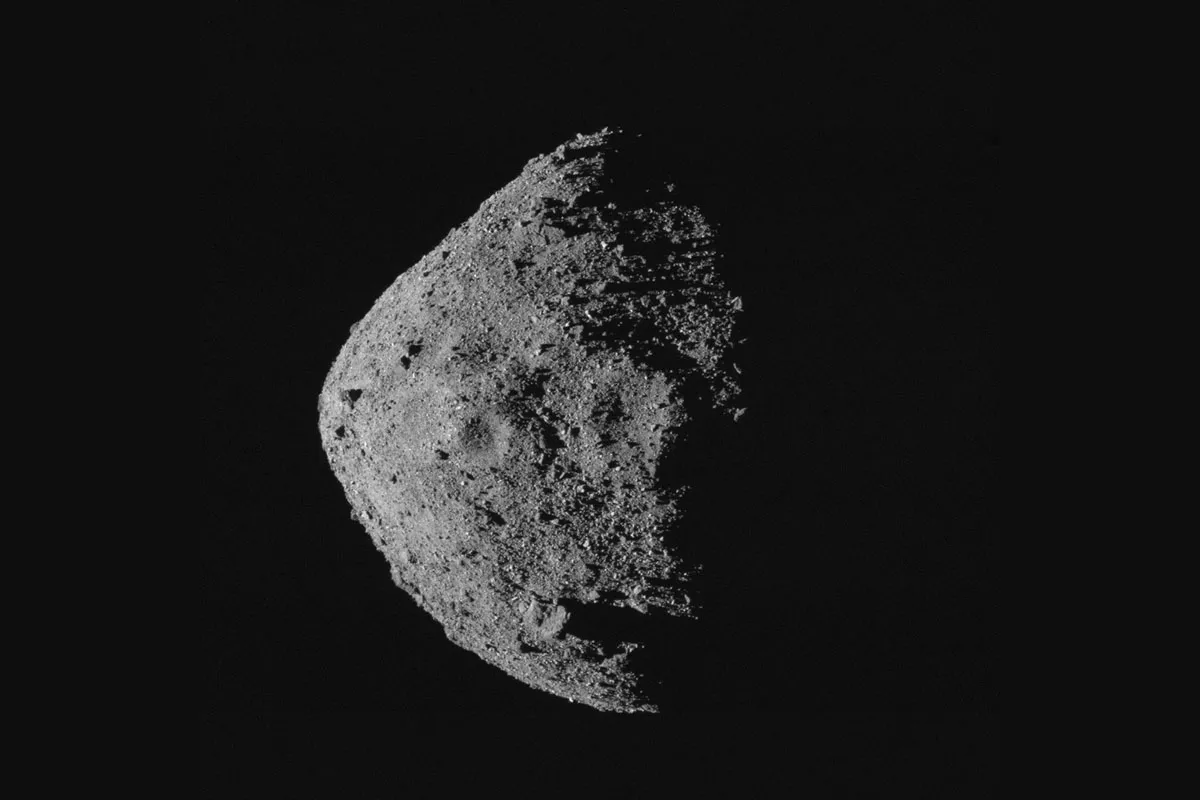
Measuring 9m in length and weighing almost 9 tonnes, with enough warning time HAMMER could successfully deflect a 500m-diameter object like Bennu – the asteroid studied by OSIRIS-REx, which has a minute chance of impacting Earth on 25 September 2135.
Alternatively, it could be used to kick a 30m-object out of the way if it was discovered only weeks before impact.
As far as planetary defence is concerned, discovery and mitigation are two sides of the same coin.
The NASA office run by Fast is coordinating all US activities in this field, she explains, with a budget of about $150m per year.
Moreover, the United Nations Committee On the Peaceful Uses of Outer Space (COPUOS) has installed two working groups to foster international collaboration: the Asteroid Warning Network and the Space Mission Planning Advisory Group.
After all, threatening asteroids don’t care too much about borders and nationalities, and a large impact would have global consequences.
Are any big asteroids heading for Earth?
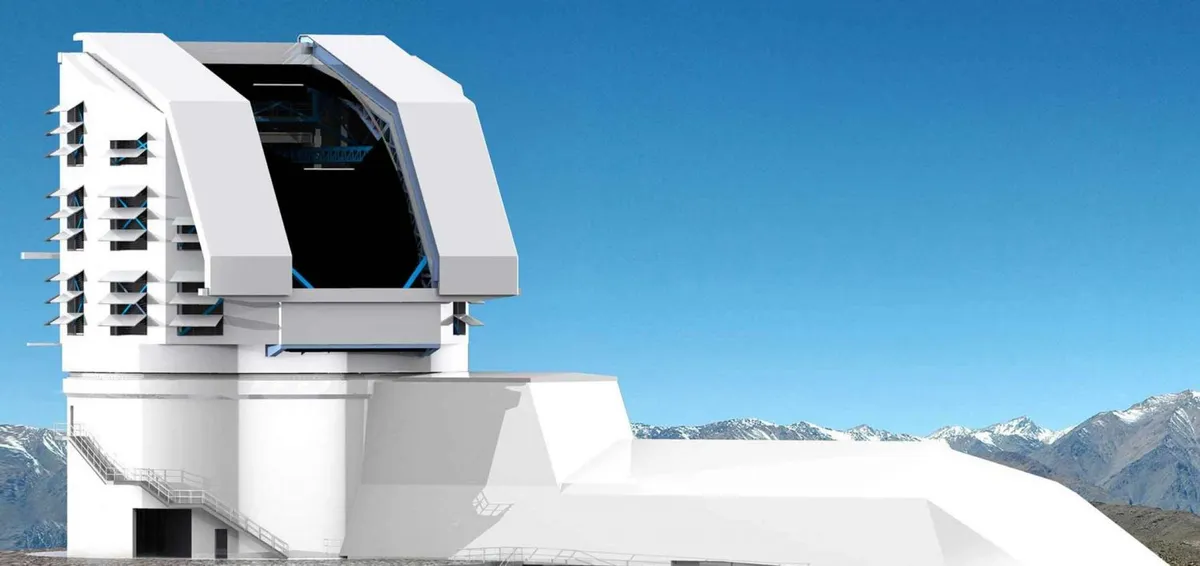
At present, astronomers don’t know of any sizeable asteroid that will hit us in the next couple of centuries.
But most of the estimated 15,000 or so potentially hazardous objects (the ones larger than 140m) are still undiscovered, and 50m-diameter space rocks are much more numerous still.
When the Vera C Rubin Observatory in Chile comes online in late 2023, the number of new asteroid discoveries is going to explode, and it’s likely it will spot one heading towards us before too long.
By then, we will be grateful for the rehearsal opportunity that the DART mission offers.
The recent COVID-19 pandemic and the upcoming climate crisis have taught us that humankind is not particularly good at preparing for global catastrophes before they happen.
In the case of cosmic impacts, the DART mission is at least a first step in finding out what can be done, so we are prepared to take charge and avert disaster when the need arises.
This article originally appeared in the December 2021 issue of BBC Sky at Night Magazine.
